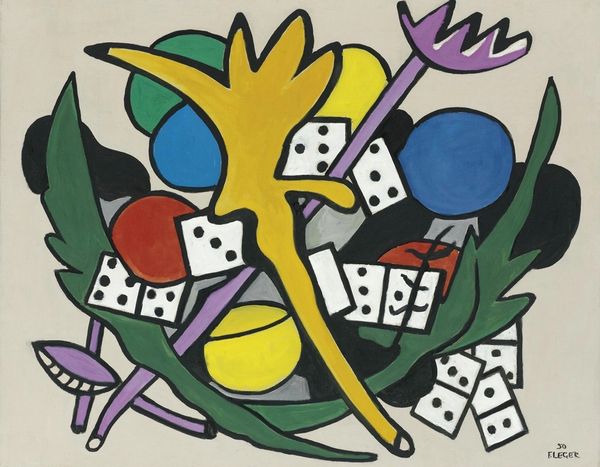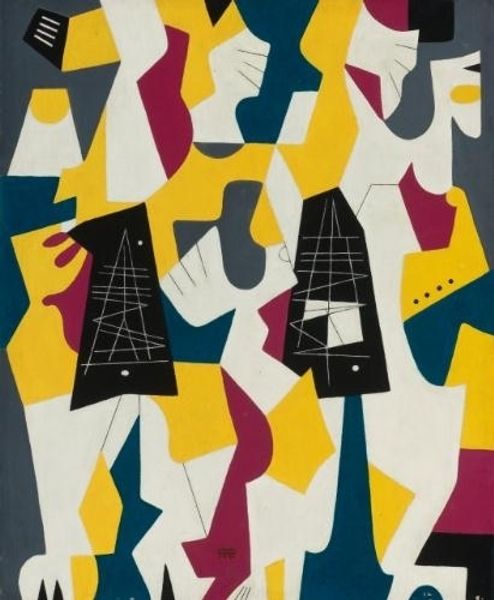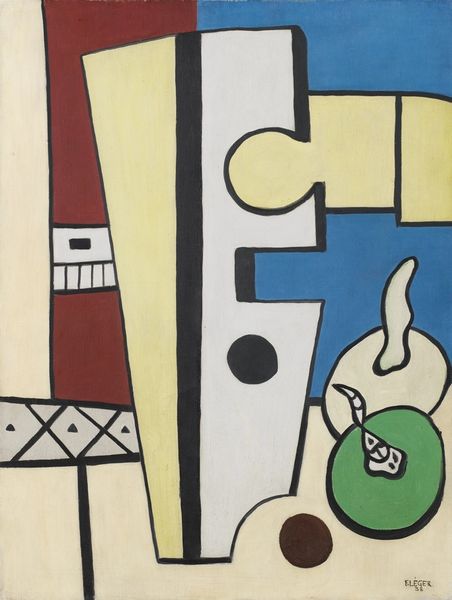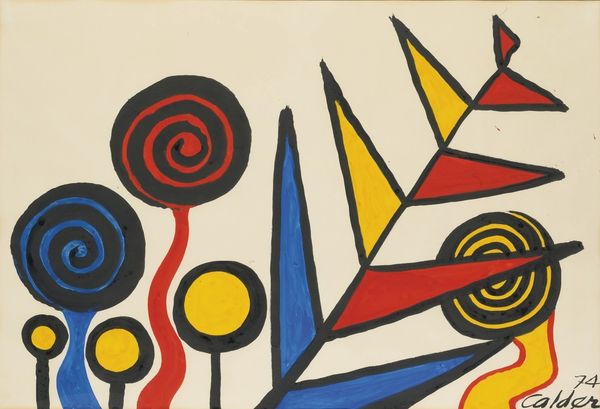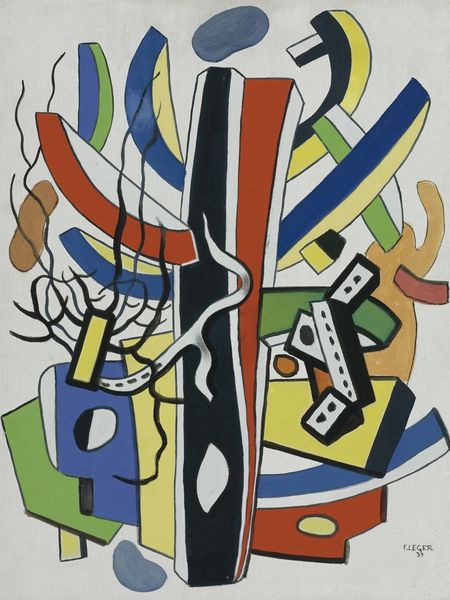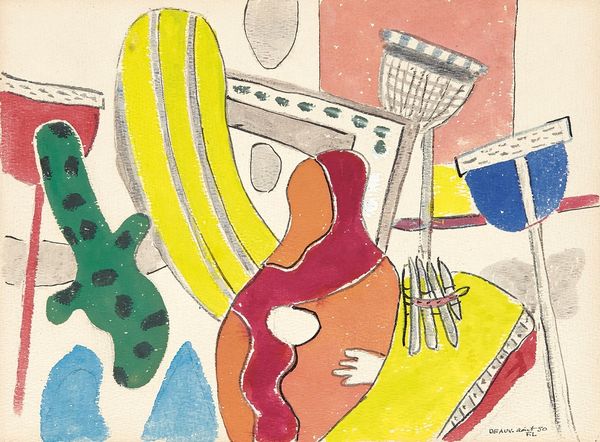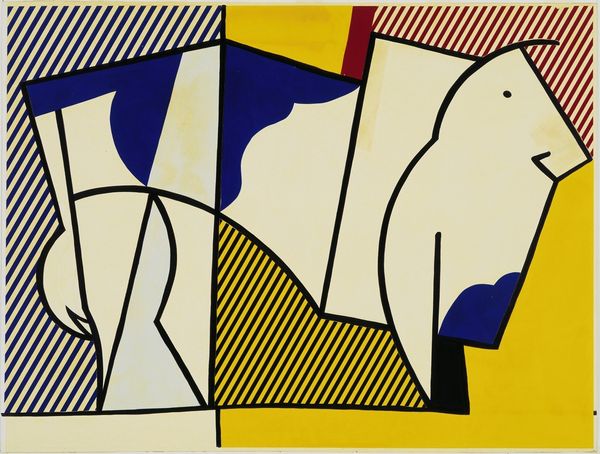
Copyright: Modern Artists: Artvee
Editor: Here we have "The Gamblers," painted by Alexander Calder in 1972. The painting consists of acrylic on canvas, and I find its almost childlike simplicity quite intriguing, particularly the bold colors and distinct outlines. What is your interpretation of the interplay between the lines and colors at work? Curator: The composition presents an arrangement of flattened forms. Consider the way Calder has positioned the cards, figures, and the hinted-at background. Are you struck by the interplay of hard-edged geometric shapes against the biomorphic contours of the figures? It suggests a tension, doesn't it? Editor: Yes, I see that. The juxtaposition does create a visual discord. But where do you find the 'unity' in this seemingly chaotic work? Curator: Observe how Calder employs a limited palette, echoing certain colors, thus unifying elements within the visual plane. Note how the primary colors command attention. Further still, observe the rhythmic alignment of the shapes—lines, contours, flat planes of colour and shape repeated strategically—leading to an orchestrated viewing experience. Editor: It's as though the geometric underpins a layer of playfulness. So, beneath the fun caricature, you are suggesting an advanced mastery over design principles? Curator: Precisely. Note also the caricature and near abstract expression, as well as the structural arrangement, which brings our attention back to basic geometries as structural forces of a formal aesthetic. Calder wasn't simply depicting gamblers; he was investigating visual construction through reduction and rearrangement of basic visual components. Editor: It really alters how I see the artwork; I missed so much on my first glance. Curator: Indeed, formalism provides lenses which unveil these intentional structures and forms the artist constructed, shaping our encounter and our sense of reality.
Comments
No comments
Be the first to comment and join the conversation on the ultimate creative platform.

